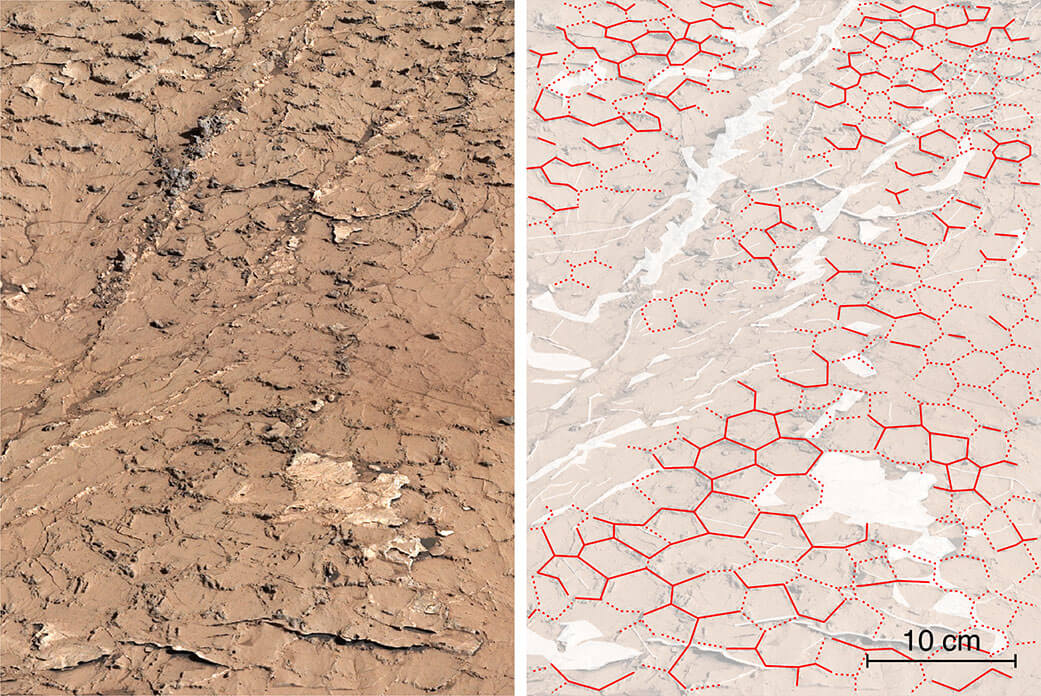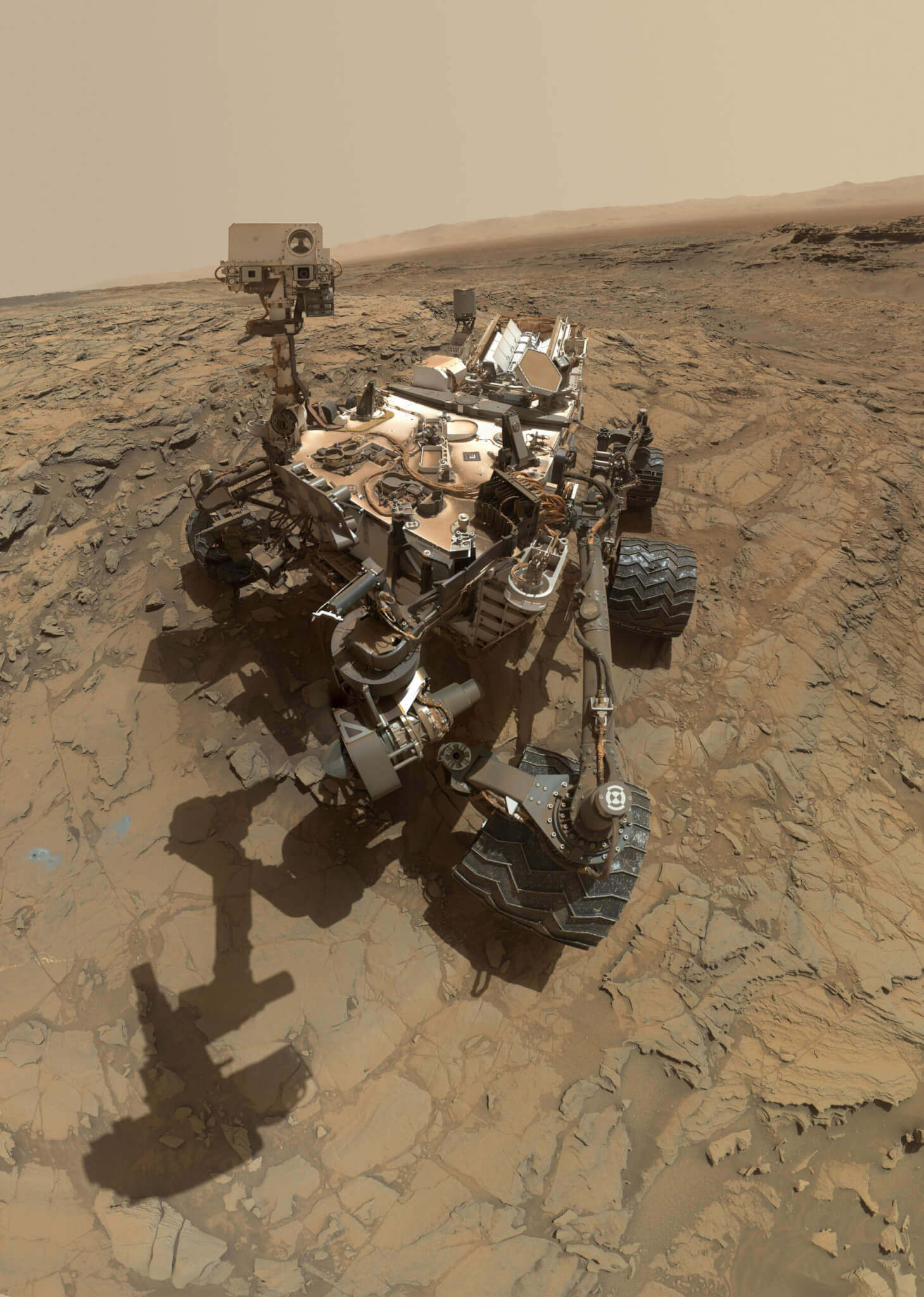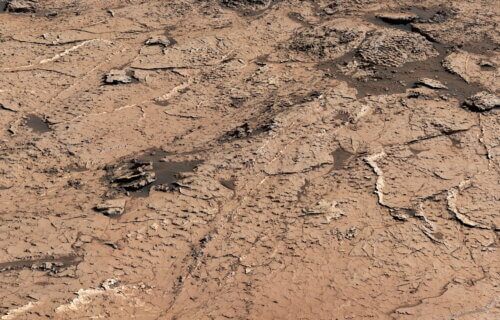WASHINGTON — Martian hunters are growing excited by a seemingly strange sight on the Red Planet — cracked mud. A recent scientific paper suggests that the conditions that created these cracks on Mars might have been favorable for the emergence of microscopic life.
Scientists are still uncertain about how life began on Earth, but a prevailing theory suggests that persistent cycles of wet and dry conditions on land might have assisted in assembling the complex chemical building blocks necessary for microbial life. This understanding adds to the excitement over a well-preserved patchwork of ancient mud cracks found by NASA’s Curiosity Mars rover, sparking interest among the mission’s team.
The paper, published in Nature, describes how the distinctive hexagonal pattern of these mud cracks offers the first evidence of wet-dry cycles on early Mars.
“These particular mud cracks form when wet-dry conditions occur repeatedly – perhaps seasonally,” says the paper’s lead author, William Rapin of France’s Institut de Recherche en Astrophysique et Planétologie, in a NASA release.

Curiosity is gradually ascending the sedimentary layers of Mount Sharp, a three-mile-high formation within Gale Crater. The rover spotted the mud cracks in 2021 after drilling a sample from a rock target nicknamed “Pontours,” situated in a transitional zone between a clay-rich layer and a higher layer enriched with salty minerals known as sulfates. While clay minerals typically form in water, sulfates tend to form as water dries up.
The minerals found in each region reflect different phases in Gale Crater’s history. The transitional zone provides a record of a period marked by long dry spells when the lakes and rivers that once filled the crater began to recede.
As mud dries, it contracts and fractures into T-shaped junctions, like those Curiosity discovered previously at “Old Soaker,” a collection of mud cracks further down Mount Sharp. Those T-shaped junctions reveal that Old Soaker’s mud formed and dried just once. In contrast, the recurring exposures to water that shaped the Pontours mud softened the T-shaped junctions, turning them Y-shaped and eventually forming a hexagonal pattern.

These hexagonal cracks continued to form in the transitional zone even as new sediment was deposited, signaling that the wet-dry conditions persisted for extended periods. Curiosity’s precision laser instrument, ChemCam, detected a durable crust of sulfates along the cracks’ edges, something not altogether unexpected given the nearby sulfate region. This salty crust made the mud cracks resistant to erosion, preserving them for billions of years.
“This is the first tangible evidence we’ve seen that the ancient climate of Mars had such regular, Earth-like wet-dry cycles,” Rapin says. “But even more important is that wet-dry cycles are helpful – maybe even required – for the molecular evolution that could lead to life.”
Although water is vital for life, a careful balance is needed: not too much, not too little. The conditions that sustain microbial life – those that permit a long-lasting lake, for example – differ from the conditions that scientists believe promote chemical reactions potentially leading to life. A key product of those chemical reactions is long chains of carbon-based molecules known as polymers, including nucleic acids, considered the chemical building blocks of life as we know it.
Wet-dry cycles regulate the concentration of chemicals that drive the fundamental reactions leading to polymer formation.
“This paper expands the kind of discoveries Curiosity has made,” explains the mission’s project scientist, Ashwin Vasavada of NASA’s Jet Propulsion Laboratory in Southern California. “Over 11 years, we’ve found ample evidence that ancient Mars could have supported microbial life. Now, the mission has found evidence of conditions that may have promoted the origin of life, too.”
The discovery of the Pontours mud cracks may have indeed provided scientists with their first opportunity to examine the remains of what could have been life’s crucible. Earth’s tectonic plates continually recycle its surface, concealing examples of its prebiotic history. Mars, without tectonic plates, has preserved much older periods of the planet’s history.
“It’s pretty lucky of us to have a planet like Mars nearby that still holds a memory of the natural processes which may have led to life,” Rapin concludes.
Curiosity was built by NASA’s Jet Propulsion Laboratory, which is managed by Caltech in Pasadena, California. JPL leads the mission on behalf of NASA’s Science Mission Directorate in Washington.
You might also be interested in:
- Red shift? Data from dead NASA probe reveals Mars is spinning faster
- Not-so-red Planet? Stunning images from space cast new light on Mars
- Is living on Mars impossible? Space travel alters genes, weakens astronauts’ immune system
South West News Service writer Dean Murray contributed to this report.


It’s best if no life is found there. If it is we can’t make much use of Mars. Or else we’ll have to let other countries kill it off first.
Tell me how this works:
Bacteria is life on Mars,
But a heartbeat isn’t life on Earth?
— Tom MacDonald, “People So Stupid”
https://youtu.be/I6FmwBPDT-w
Satellite image Sanford Al 21235 k l